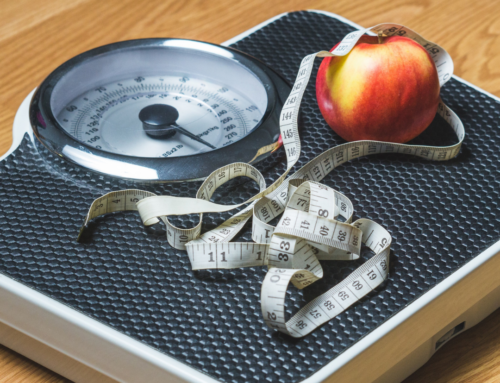With the start of another Major League Baseball season, one thing is certain: Not all of the players who took the field on opening day will be in the lineup come October. Why? The repetitive stress of throwing a baseball and swinging a bat every day causes injuries, especially among the more veteran (i.e. older) players.

The doctors and trainers of baseball players – especially those who are paid large salaries to be on the field every day – discovered a treatment about 10 years ago which speeds up the healing process. It is called platelet rich plasma (PRP) therapy and it has been used for the rehab of many professional athletes, including NBA star Kobe Bryant, PGA golfer Tiger Woods and MLB player Alex Rodriquez.
This therapy has also become popular for those non-professional, “weekend warrior” athletes who might over-do the activity and end up with ligament tears, muscle pulls and even joint dislocation. It can also help with healing non-athletic injuries and minor surgical procedures. One of the most enthusiastic proponents of platelet rich plasma therapy is the founder of Evexias Medical Centers, Terri DeNeui, DNP, ACNP, APRN-BC.
What is PRP?
“Platelet rich plasma therapy is exactly that,” Terri said in a recent interview. “It is plasma, which is part of our blood and it’s what left when we take the red cells out. Inside that plasma are platelets and these have amazing attributes which enhance the tissue – healing process. Growth factors and stem cells are found in the plasma as are many other elements which can reduce inflammation and speed healing.”
“When you take this plasma and remove the red blood cells, what you have is an amazing serum which can do incredible things for the healing process,” she said.
How much blood is needed for one injection of PRP?
“About 60 cc of blood, or about 2 fluid ounces, is needed to ‘spin down’ the blood to get the platelets necessary to do the work,” she said. “That equals about 12 teaspoons of blood.”
If you would like to learn more about platelet rich plasma therapy, just click here for a no-obligation consultation with EVEXIAS Medical Centers.
Not All PRP is Equal
There is a difference in the potency of PRP based on the manner in which the blood is concentrated. Hormonal Health and Wellness has a more thorough way of processing this serum.
“PRP has been around for a long time, but has really gotten a lot more attention in the last decade,” Terri said. “Over the past several years, what we’re finding is that it’s NOT that the PRP works in some people and doesn’t work in others. It’s all about how it’s concentrated.”
“At one time it was thought that one could simply remove the red cells and what was left was platelet rich plasma,” she noted. “However, it’s really not. The key is spinning down the plasma twice.”
“Our approach is to draw the blood from the patient. Then we take that and spin it down in a centrifuge and it separates the red blood cells from the plasma. From that, we draw off the red cells and what we have left is a golden-colored substance. We then take that plasma and spin it down again. That further separates the platelets and the white blood cells from the plasma. So, what you have then is the ‘platelet rich’ plasma.”
“We get about 5 to 7 cc, which is about a teaspoon and a half, worth of PRP,” she said. “So, we start with about 12 teaspoons of blood and end up with about 1 to 2 teaspoons of platelet rich plasma. That’s where the ‘gold’ is!”
“You have to have about a million platelets, called a ‘nanogram’ in order for this to work. If you don’t have the technology in order for this to work – to spin it down twice – you’re not going to get much of an effect.”
Where is the Injection Placed?
Is it necessary for the PRP injection to be specifically placed to heal tissue, or can it be placed in the general area of the damage?
“It really depends on the injury,” Terri noted. “Some orthopedic practitioners will inject directly into the (damaged) joint, which stimulates all of that cartilage and joint healing. With injured muscles and tissues, the PRP is injected around the area of the injury. The PRP then ‘goes’ where it needs to go. It’s going to be attracted to the damaged area of tissue.”
“All of that amazing stuff that’s in that plasma pretty much goes to work, where it needs to go to work!”
Which Hormonal Health and Wellness Procedures Use PRP to Speed Healing?
 “We do what’s called ‘pain-free PRP,’” she said. “That is more for injured muscles or tendons, tendonitis, any kind of inflammation. We defer the injections that are made directly into the joints to the orthopedic doctors because that’s a specialty of this group of physicians.”
“We do what’s called ‘pain-free PRP,’” she said. “That is more for injured muscles or tendons, tendonitis, any kind of inflammation. We defer the injections that are made directly into the joints to the orthopedic doctors because that’s a specialty of this group of physicians.”
“We’re more interested in the weekend warriors, who may have overdone it, because those injuries respond quickly to PRP therapy.”
This therapy has a very wide range of efficacy. What is it about PRP that enables it to help with everything from hair restoration, to erectile dysfunction to torn muscles?
“Injured tissue heals with nutrients and not drugs,” she said. “Platelet rich plasma is full of nutrients which affect inflammation, which stimulate growth factors and the stem cells. It basically stimulates the healing of any tissue. Plus, it’s not necessary for this tissue to be ‘injured.” The PRP can assist healing of tissue affected by the aging process.”
“Skin discoloration or ED or anything related to the aging process can be positively impacted by the beautiful platelet rich plasma! We just need to put this PRP in the area that is showing the effects of injury or aging and, as I said before, it just goes to work, doing what it needs to do. It’s fascinating.
What About Side Effects?
“Since this is the person’s own blood, there is very little chance for problems,” Terri said. “There is no risk of disease being transmitted. There’s no risk of allergic reactions.”
“The biggest ‘risk’ comes from the human who is preparing the PRP,” she said. “You want to make sure that whoever is doing your PRP know what they are doing – they know how to extract the blood and they know how to spin it down. Sterile technique is very, very important, especially if you are injecting into joint spaces. So, if the provider is not paying attention to these types of things, infection could be a risk.”
“As for the PRP itself, there is almost no risk,” she said. “You just can’t mess up!”
Practicing What She Preaches
Terri had a recent surgical procedure where she asked the physician to use PRP. What happened?
“It was fascinating,” she said. “I had injured my toe joint a couple of years ago and after being in pain for about a year, I decided to get something done about it. I asked the surgeon if I brought her some of my PRP, would she use it in the joint. She was familiar with PRP and had used it in some of her patients and she agreed to use it.”
“While she had the operation site open, she just drizzled that PRP solution on the site before she sutured up the incision. What’s fascinating to me is the fact that PRP is a nerve regenerative as well and this really helps with pain. I did not need ANY of my pain meds after that surgery! Oh, I overdid it a couple of times and got a little swelling, but I just took an over-the-counter pain medicine and I was fine.”
“I just saw the surgeon yesterday and she was amazed at how everything had been healing.”
If you would like to listen to the complete interview with Terri Suresh DeNeui, listen to our podcast below.






